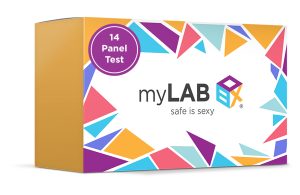What Are The Most Common STD Signs?

What are the most common STD signs?
This is a complicated question.
It depends on which STDs you’re asking about. Each has its own set of symptoms and signs. Sexually transmitted disease and infection rates are on the rise. According to the Center for Disease Control (CDC), cases of gonorrhea, chlamydia, and syphilis have all shown substantial increases since 2014. There has also been a massive spike in HIV cases.
Know Your STD Signs
Of course, creating a gigantic list of all the major STD signs would be way too much for just one article. Unfortunately, there are just too many infections for us to shorthand the answer. But myLAB Box is here to help. Our service offers test packages for a wide array of the most common sexually transmitted diseases.
Click on each name for further information about the specific STD signs to look out for:
- Chlamydia
- Gonorrhea
- Trichomoniasis
- Genital Herpes
- Human Papillomavirus (HPV)
- Syphilis
- Mycoplasma and Ureaplasma
- HIV
- Hepatitis C
Additionally, if you peruse our blog, you’ll find a wide array of information about symptoms for these common infections. If you’re unsure of what to test for, you can also speak with our customer service team or consult our page of Frequently Asked Questions.
How Often Should I Get Tested?
Now that you know where to look for information about STD signs, it’s time to talk about testing. Engaging in any sexual activity can carry serious consequences for anyone who chooses not to get tested. To answer the “most common STD signs” question, the answer can often be that there aren’t any. Some infections simply don’t come with symptoms, but the side effects if left untreated can be serious. With all of these lurking infections, it pays to protect yourself! The best defense will always be regular testing.
“Regular” is the key word here. This is the only way to take full control of your sexual health. At myLAB Box, we recommend that sexually active adults get screened every 3-6 months. It’s generally a good idea to get tested for STDs at least once each year.
You can vary the frequency of your testing based on your lifestyle and sexual activity. For instance, there are certain factors that can put you at a greater risk of contracting an STD. These factors include having sex with a new person or having more than one sex partner since your last test. If you are in an open relationship, you may require more frequent testing depending on your specific situation. Gay men and transgender individuals are typically at higher risk for certain STDs as well.
Being in a monogamous relationship can make you safer, but you still need to test regularly to be absolutely sure. Since some infections may not show symptoms for many years, you’ll never be sure what each of you brought into the relationship until you’ve both been tested. After all, you can never be totally sure that your partner has been faithful.
Fortunately, testing is easier than ever before now that you can get screened from the comfort of your home. Our simple testing process will let you test any time, any place.
What STDs Should I Be Tested For?
As a nation, we’re not testing as vigorously, or as frequently, as we should be. The CDC recently reported that half of the adults in the United States between the ages of 18 and 44 have never been tested for anything beyond HIV.
Many people will get tested only once in their lifetime. Usually, that test is only for HIV. Often these people will incorrectly consider a single negative result as a permanent clean bill of health and never get tested again. This couldn’t be further from the truth.
It is critical that we are all tested for a full spectrum of possible infections on a regular basis. myLAB Box offers tests for the most common STDs in the United States, listed above.
Inside every at-home test package, you’ll find:
- The urine, vaginal swab and/or blood sample collection kit
- Easy to follow instructions
- A postage paid return envelope to send your samples in for testing
- Free 2-way shipping
- Fast and easy access to your results online
- A complementary telemedicine consultation* with a medical professional in your state (in the event you test positive)
*Available in states that allow telemedicine. Most do.
To help make the testing process as simple and convenient as possible, myLAB Box offers a variety of test combos. Our Safe Box, Uber Box or Total Box test the four, eight or fourteen most common STDs respectively.
Test Again, Just To Be Sure
If your results came back positive, the next step is treatment. Unfortunately, that might not be the end of the process. myLAB Box highly recommends that everyone who receives a positive result re-test within 21-28 days after completion of treatment.
This “double-check” makes absolutely sure that the infection has totally cleared. The odds are very good that you will receive a negative result, but it’s always better to be safe than sorry! If you do not re-test to confirm successful treatment, you could still be at risk for re-infection. It may still be possible for you to infect a partner as well.
No one should ever feel ashamed about testing positive for an STD. These are just a fact of life when it comes to our sexual health.
While most STDs are curable, leaving an infection untreated can have serious consequences. This is why it is always good to learn the STD signs and listen to your body. Serious consequences may include infertility, permanent chronic illness and even death. So, study up on the STD signs we’ve linked to above. Feel free to ask us any questions you may have! Because, at myLAB Box we believe in empowering our customers to take total control over their sexual health!
Popular Tests

Total Box
14 Panel STD Test
In Stock – Free Shipping
$369 – $399
 Safe Box – 4 Panel Home STD Test Pack
Safe Box – 4 Panel Home STD Test Pack  Uber Box – 8 Panel Home STD Test Pack
Uber Box – 8 Panel Home STD Test Pack  Total Box – 14 Panel STD Test Pack
Total Box – 14 Panel STD Test Pack 